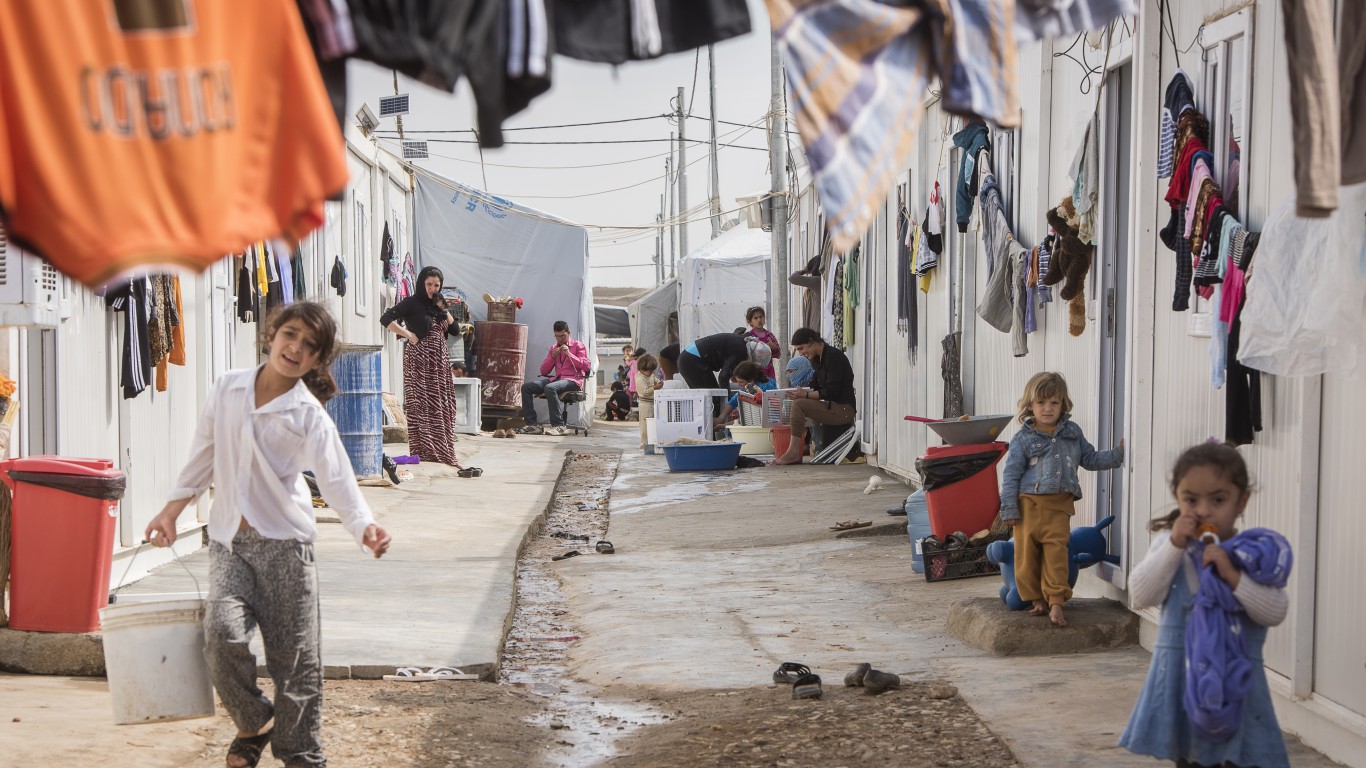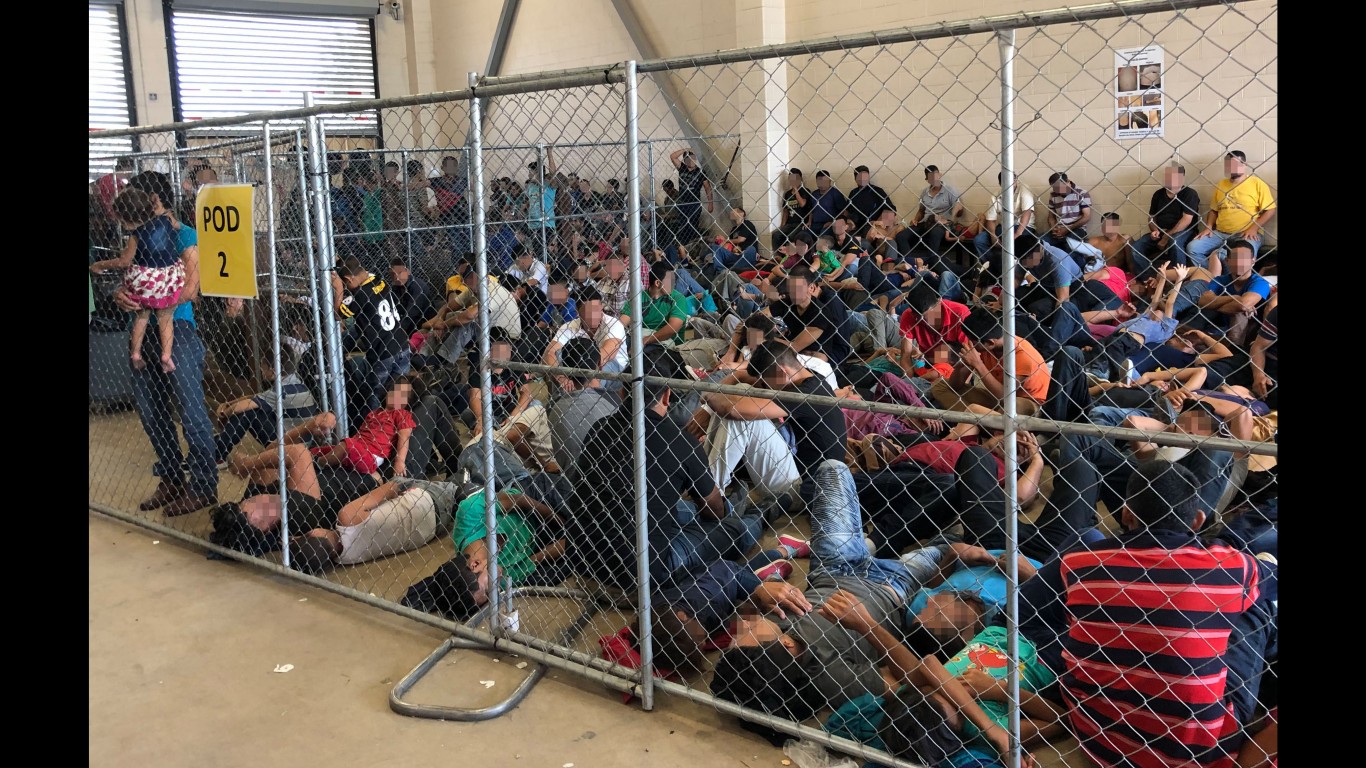
It will soon be two years since the pandemic disrupted life in the United States, causing some people to reconsider where they live and how they work. One major consequence of the outbreak has been the relocation of people, mostly out of densely populated urban areas to parts of the country where it is much easier to social distance. There are political consequences to population changes. States gaining people may end up with more seats in the House of Representatives. (See how the population of every state has changed in the last 100 years.)
To identify the states that have grown the most since the pandemic, 24/7 Wall St. looked at the 1-year population change from July 1, 2020 to July 1, 2021 according to the US Census Bureau. The average number of new COVID-19 cases in the past seven days comes from 24/7 Wall St.’s own COVID calculator for state totals.
Some states where the population increased during the pandemic were growing anyway as the result of the longtime trend of Americans moving out of Rust Belt states like Michigan and Ohio and Northeastern states like New York and heading to warmer climates (and places with lower taxes) such as Florida, Arizona, and Texas. In addition, some people chose new states where COVID mandates were non-existent or less severe – for instance, South Dakota as well as Florida and Texas.
People also left more densely populated states of New Jersey, Rhode Island, and Maryland for less densely populated locations like Nevada, Idaho, Montana, and Utah. All of these have a population density of fewer than 30 residents per square mile, and all experienced the largest population increases over the period we tracked, growing by more than 1%. (By population, these are currently the largest states in America.)
Click here to see the states that have grown most since the pandemic began
Delaware was an outlier. The nation’s first state is also the fifth-most densely populated, at 512 people per square mile – yet the state experienced a population surge significant enough to push it over the 1 million mark. A possible reason might be an outflow of people fleeing Washington, D.C.
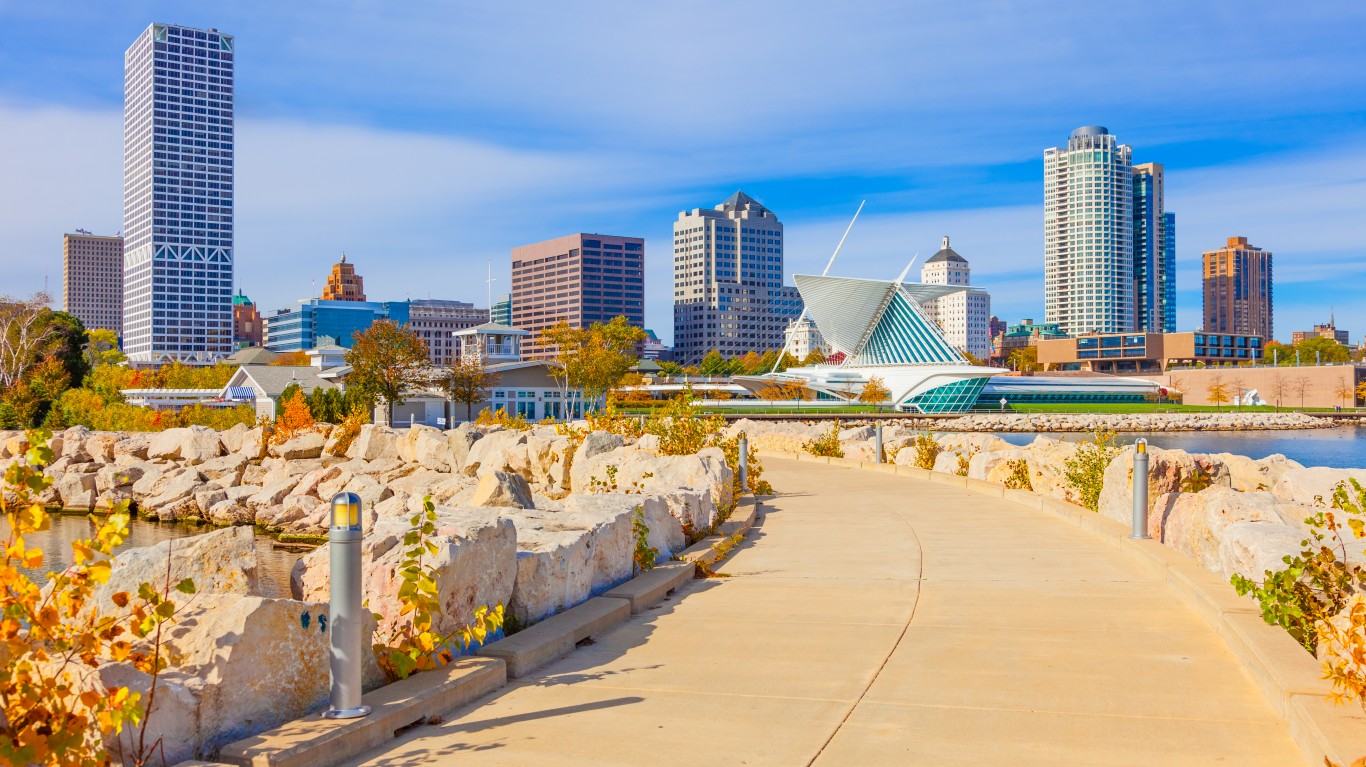
31. Wisconsin
> 1-year change in population: 0.1%
> Population estimate (July 1, 2020) 5,892,323
> Population estimate (July 1, 2021) 5,895,908
> Avg. new COVID cases, past 7 days 6,602.29
[in-text-ad]
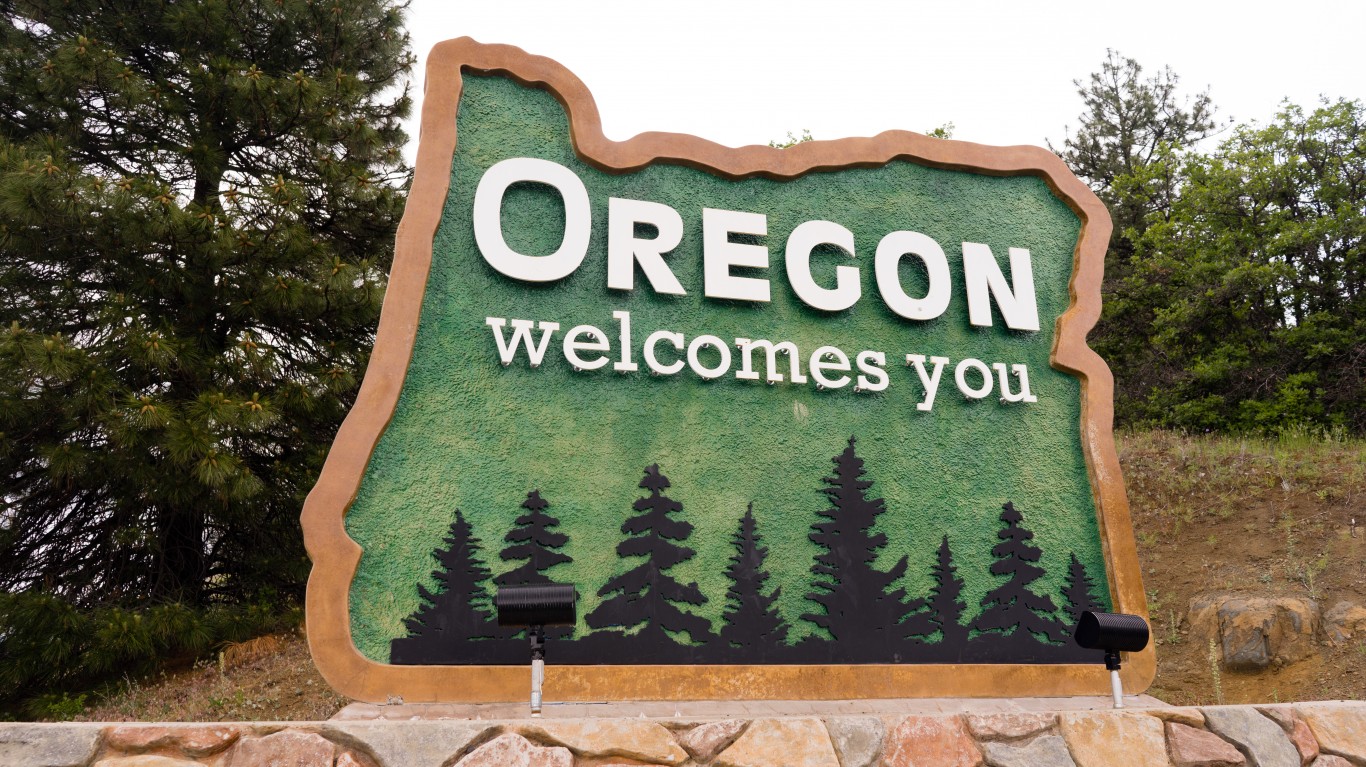
30. Oregon
> 1-year change in population: 0.1%
> Population estimate (July 1, 2020) 4,241,544
> Population estimate (July 1, 2021) 4,246,155
> Avg. new COVID cases, past 7 days 6,229.43

29. Nebraska
> 1-year change in population: 0.1%
> Population estimate (July 1, 2020) 1,961,455
> Population estimate (July 1, 2021) 1,963,692
> Avg. new COVID cases, past 7 days 2,263.71
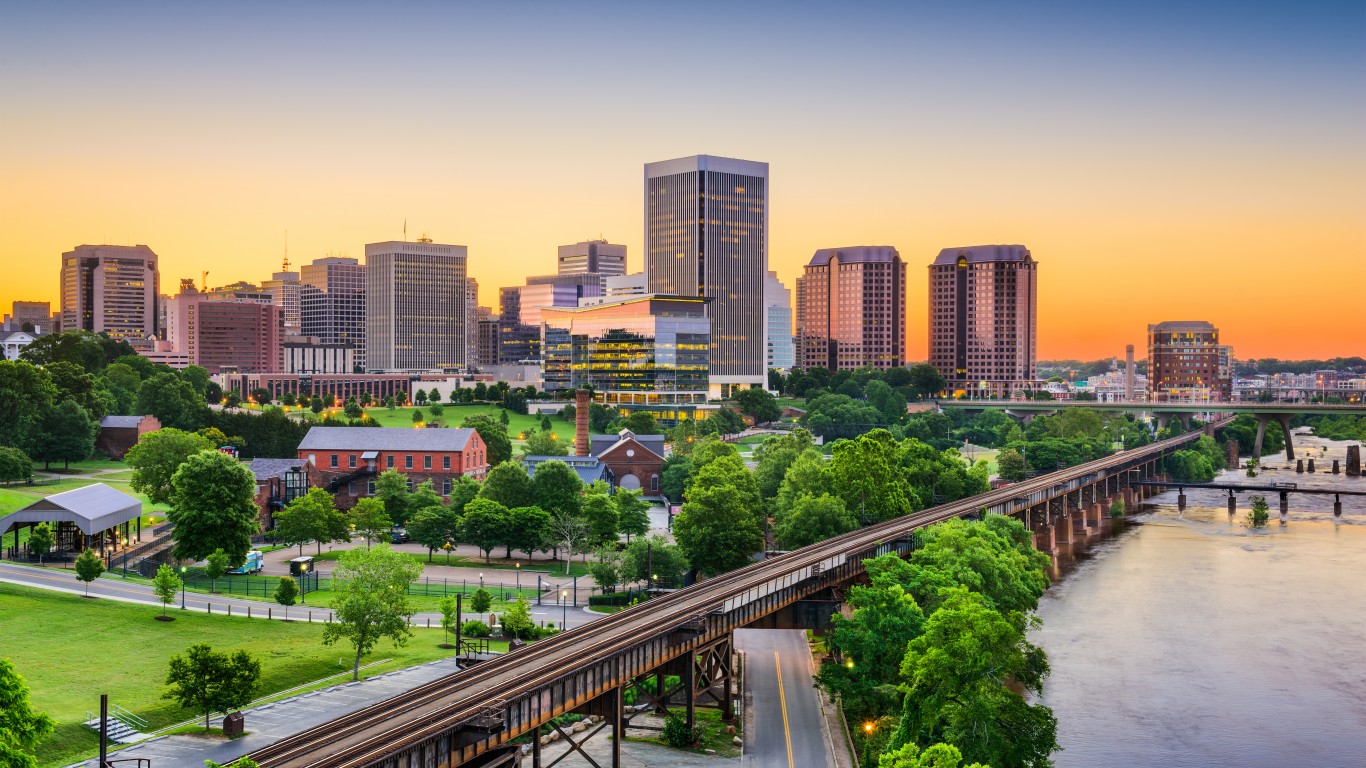
28. Virginia
> 1-year change in population: 0.1%
> Population estimate (July 1, 2020) 8,632,044
> Population estimate (July 1, 2021) 8,642,274
> Avg. new COVID cases, past 7 days 8,530.14
[in-text-ad-2]
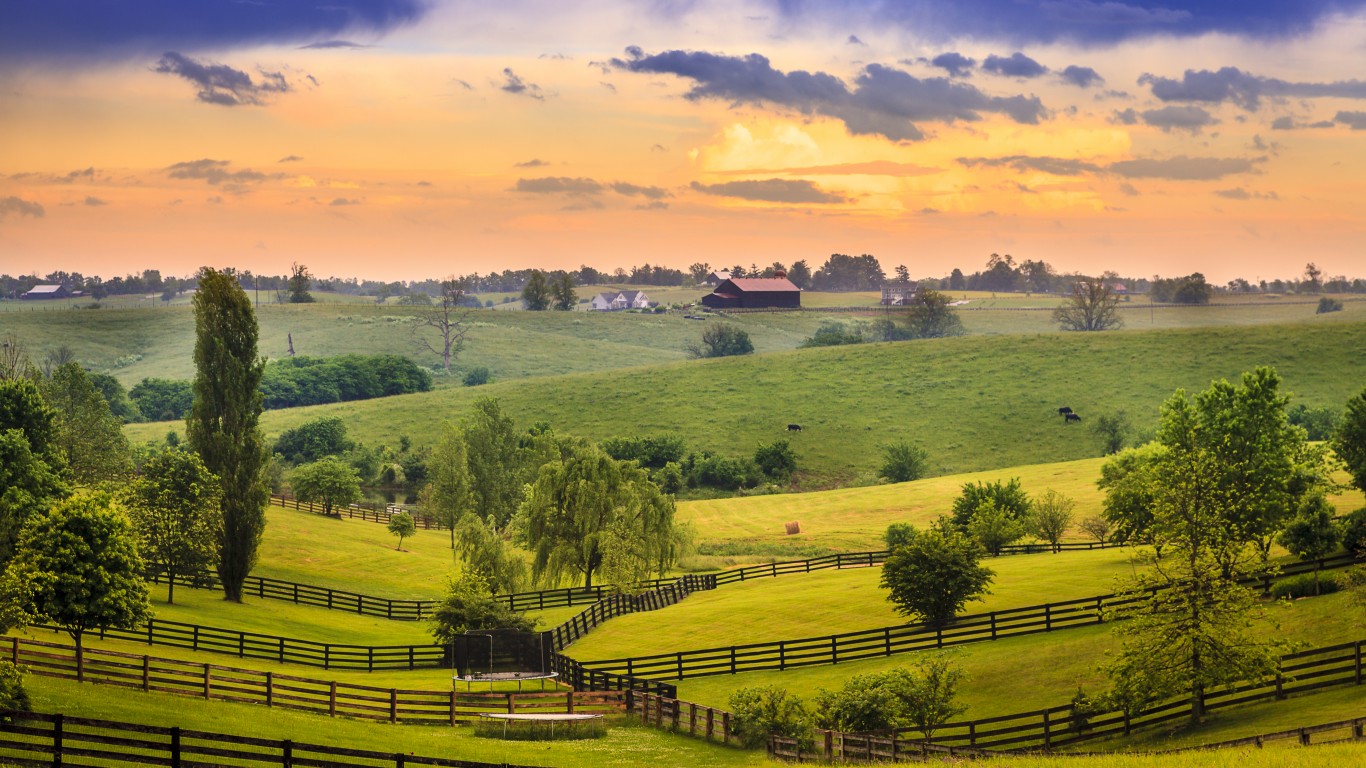
27. Kentucky
> 1-year change in population: 0.1%
> Population estimate (July 1, 2020) 4,503,958
> Population estimate (July 1, 2021) 4,509,394
> Avg. new COVID cases, past 7 days 10,786.71

26. Iowa
> 1-year change in population: 0.1%
> Population estimate (July 1, 2020) 3,188,669
> Population estimate (July 1, 2021) 3,193,079
> Avg. new COVID cases, past 7 days 3,684.14
[in-text-ad]
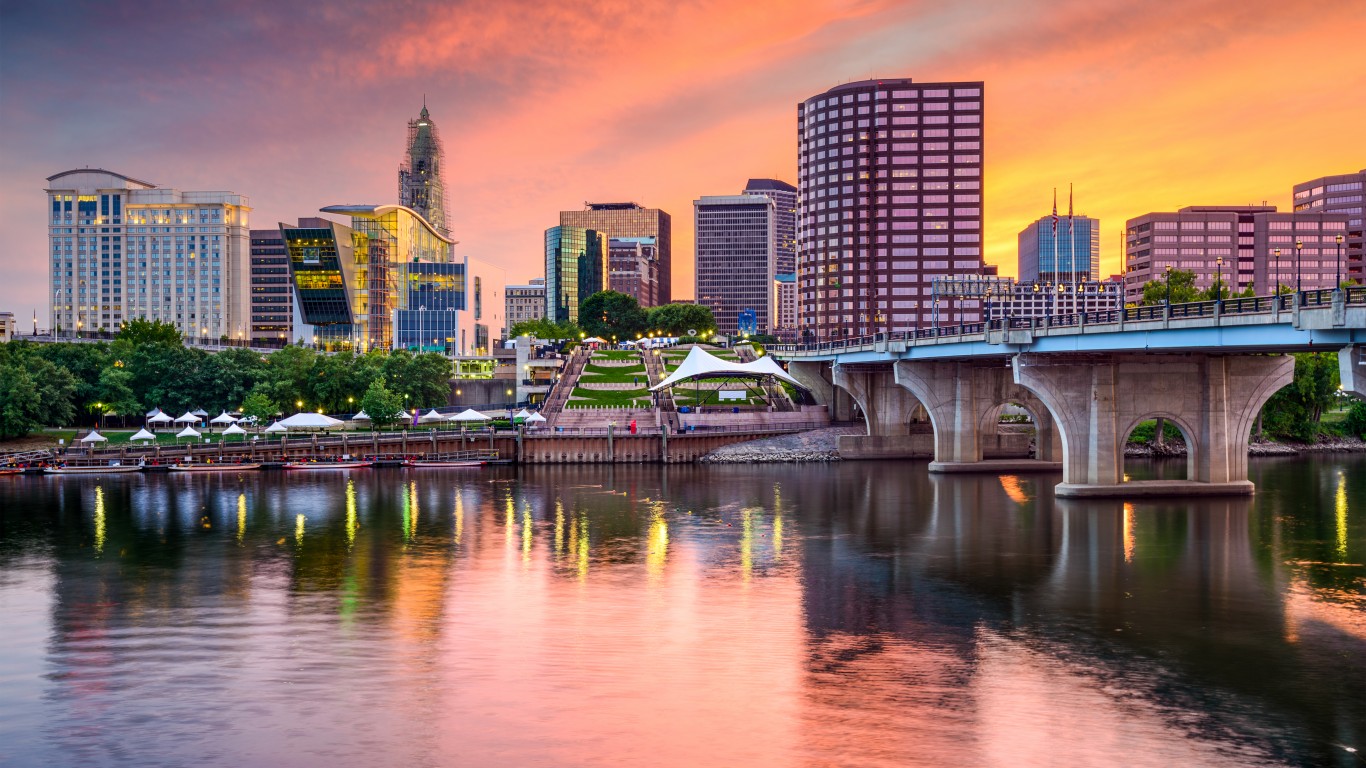
25. Connecticut
> 1-year change in population: 0.1%
> Population estimate (July 1, 2020) 3,600,260
> Population estimate (July 1, 2021) 3,605,597
> Avg. new COVID cases, past 7 days 2,238.43

24. Missouri
> 1-year change in population: 0.2%
> Population estimate (July 1, 2020) 6,154,481
> Population estimate (July 1, 2021) 6,168,187
> Avg. new COVID cases, past 7 days 7,755.00
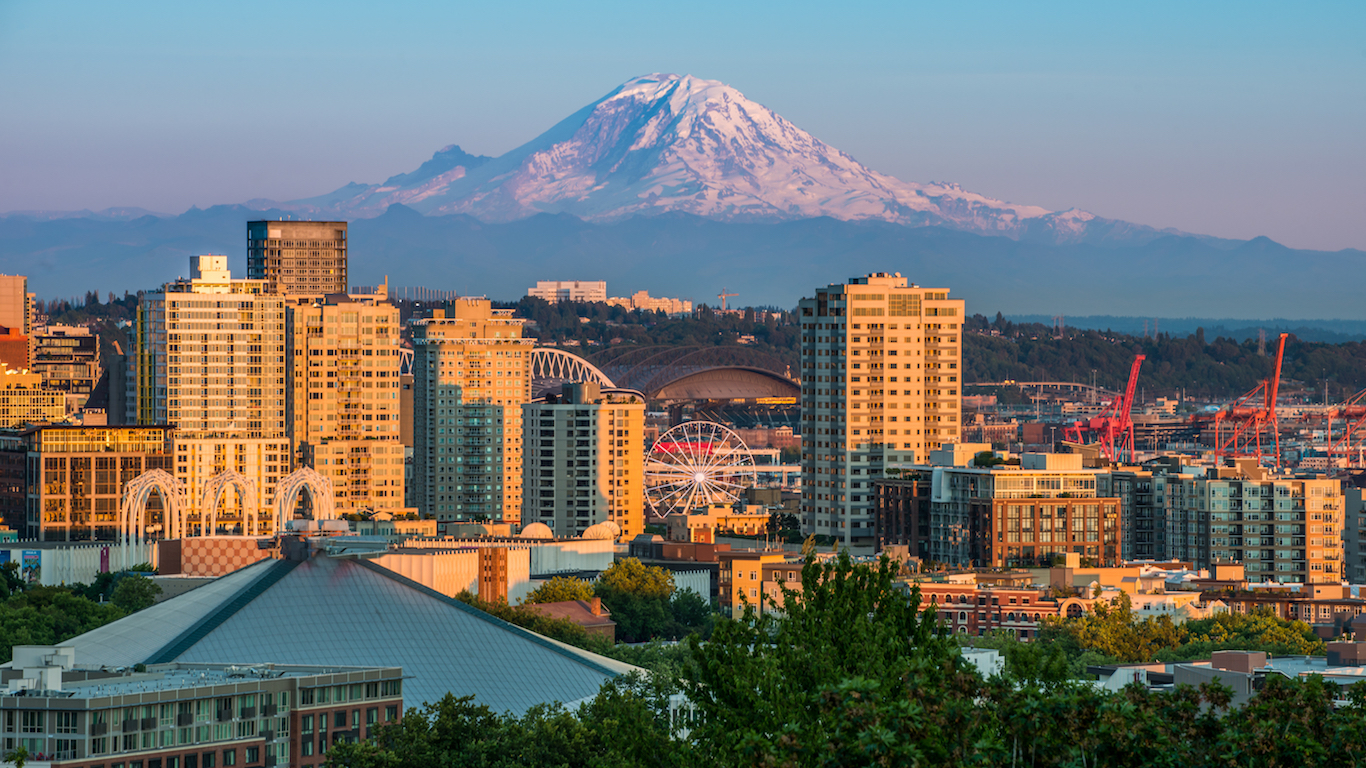
23. Washington
> 1-year change in population: 0.3%
> Population estimate (July 1, 2020) 7,718,785
> Population estimate (July 1, 2021) 7,738,692
> Avg. new COVID cases, past 7 days 19,490.29
[in-text-ad-2]

22. Wyoming
> 1-year change in population: 0.3%
> Population estimate (July 1, 2020) 577,267
> Population estimate (July 1, 2021) 578,803
> Avg. new COVID cases, past 7 days 1,233.14

21. Indiana
> 1-year change in population: 0.3%
> Population estimate (July 1, 2020) 6,785,644
> Population estimate (July 1, 2021) 6,805,985
> Avg. new COVID cases, past 7 days 9,046.00
[in-text-ad]
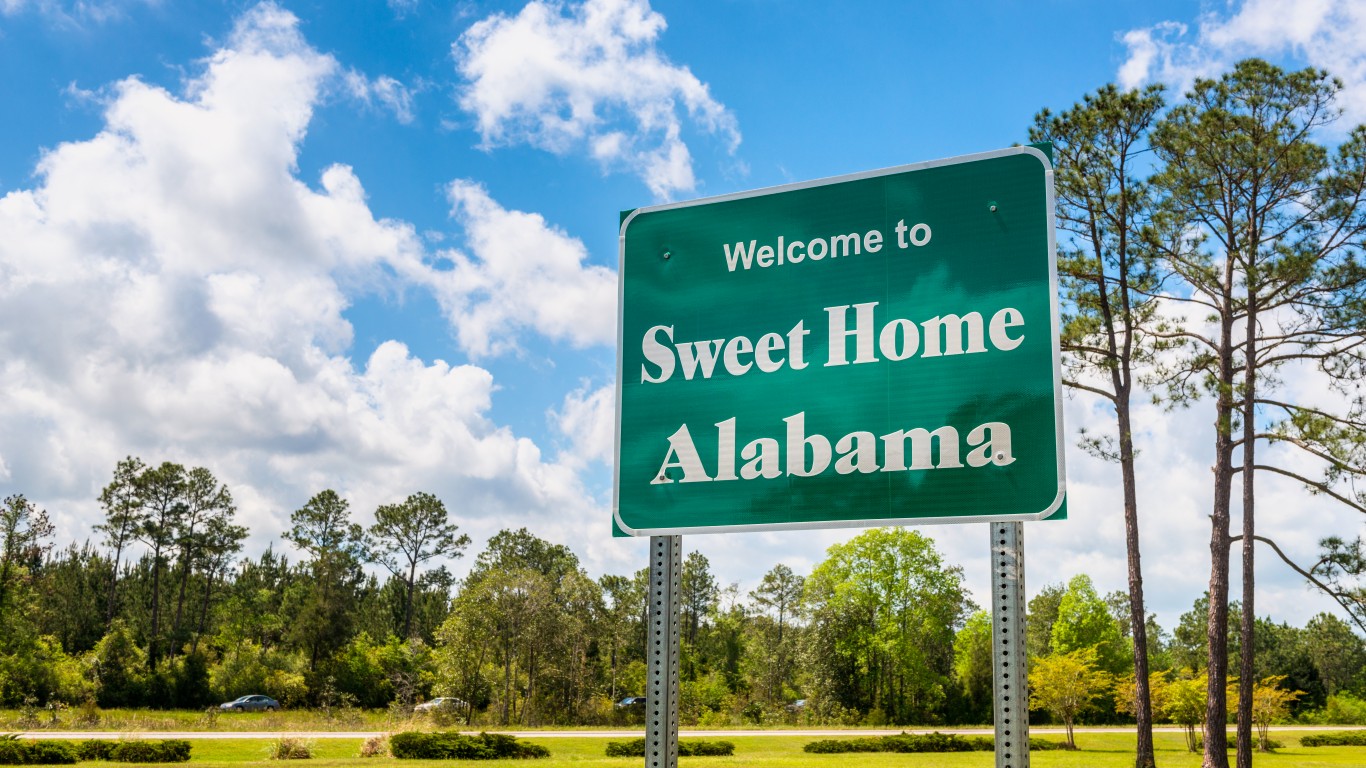
20. Alabama
> 1-year change in population: 0.3%
> Population estimate (July 1, 2020) 5,024,803
> Population estimate (July 1, 2021) 5,039,877
> Avg. new COVID cases, past 7 days 8,848.57

19. Arkansas
> 1-year change in population: 0.5%
> Population estimate (July 1, 2020) 3,012,232
> Population estimate (July 1, 2021) 3,025,891
> Avg. new COVID cases, past 7 days 4,982.57

18. Vermont
> 1-year change in population: 0.5%
> Population estimate (July 1, 2020) 642,495
> Population estimate (July 1, 2021) 645,570
> Avg. new COVID cases, past 7 days 646.57
[in-text-ad-2]
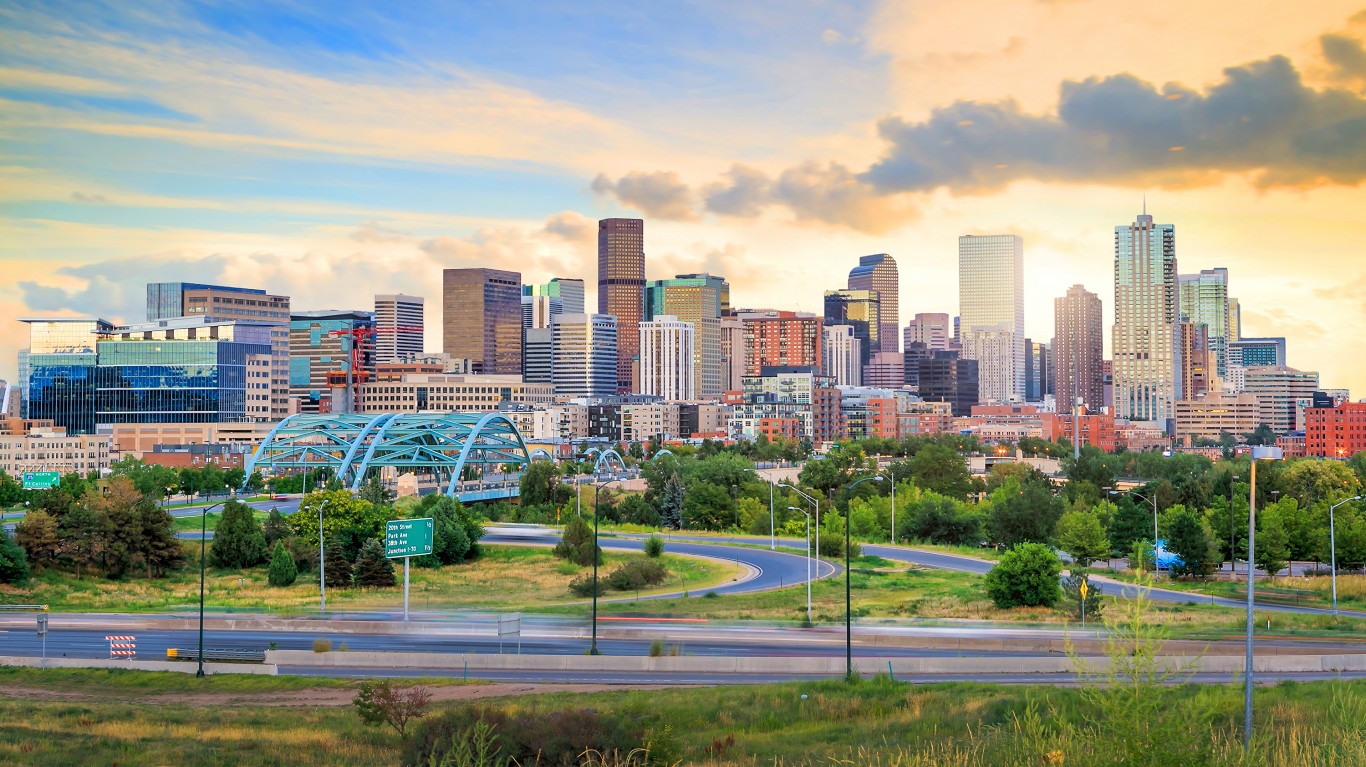
17. Colorado
> 1-year change in population: 0.5%
> Population estimate (July 1, 2020) 5,784,308
> Population estimate (July 1, 2021) 5,812,069
> Avg. new COVID cases, past 7 days 6,424.29

16. Oklahoma
> 1-year change in population: 0.6%
> Population estimate (July 1, 2020) 3,962,031
> Population estimate (July 1, 2021) 3,986,639
> Avg. new COVID cases, past 7 days 8,067.86
[in-text-ad]
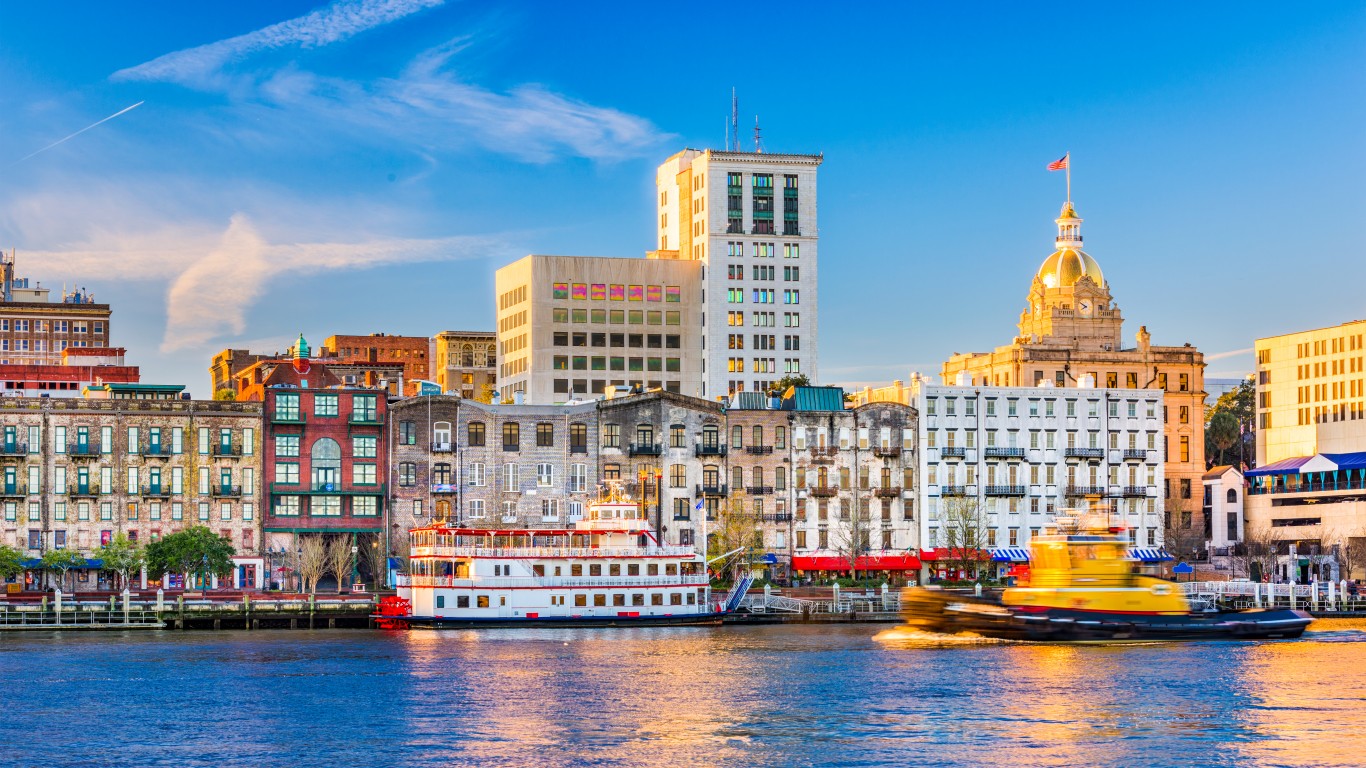
15. Georgia
> 1-year change in population: 0.7%
> Population estimate (July 1, 2020) 10,725,800
> Population estimate (July 1, 2021) 10,799,566
> Avg. new COVID cases, past 7 days 13,655.86

14. Maine
> 1-year change in population: 0.7%
> Population estimate (July 1, 2020) 1,362,280
> Population estimate (July 1, 2021) 1,372,247
> Avg. new COVID cases, past 7 days 1,040.71
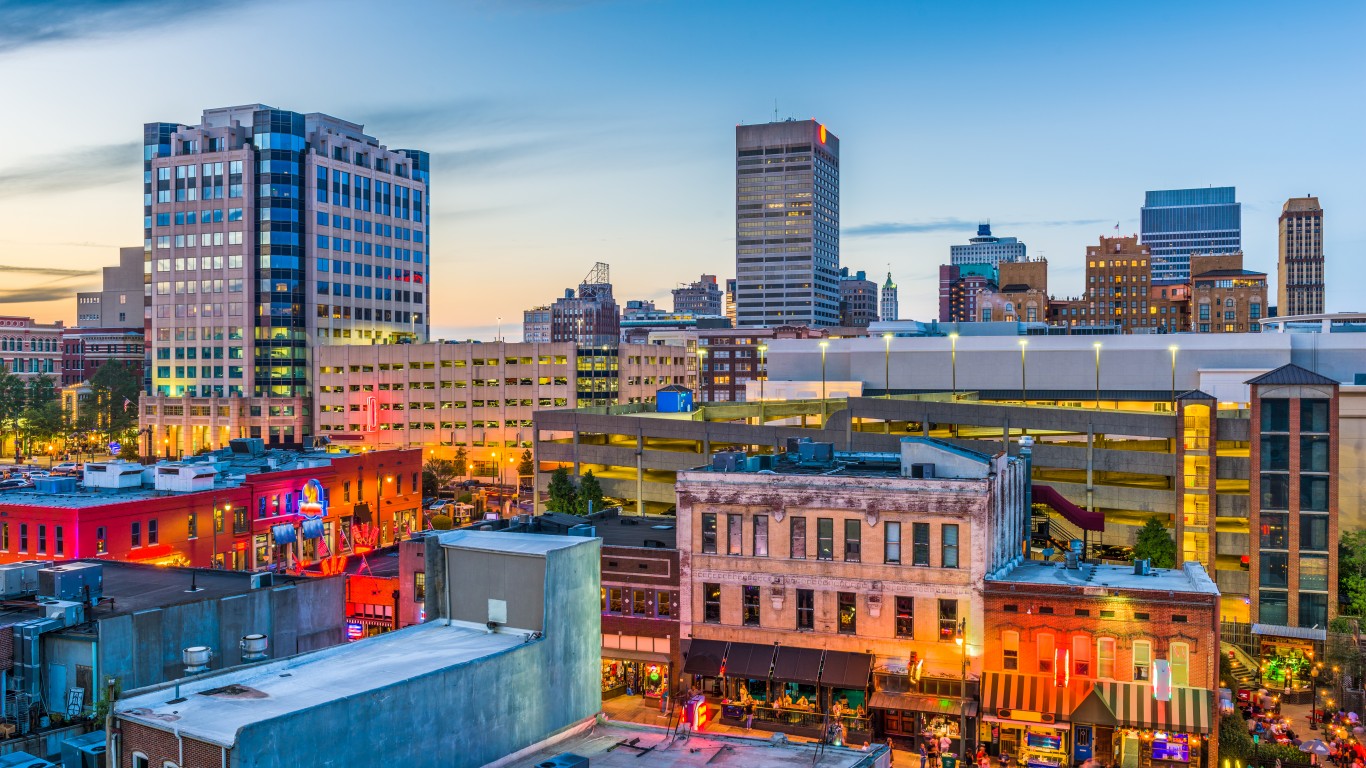
13. Tennessee
> 1-year change in population: 0.8%
> Population estimate (July 1, 2020) 6,920,119
> Population estimate (July 1, 2021) 6,975,218
> Avg. new COVID cases, past 7 days 13,113.57
[in-text-ad-2]
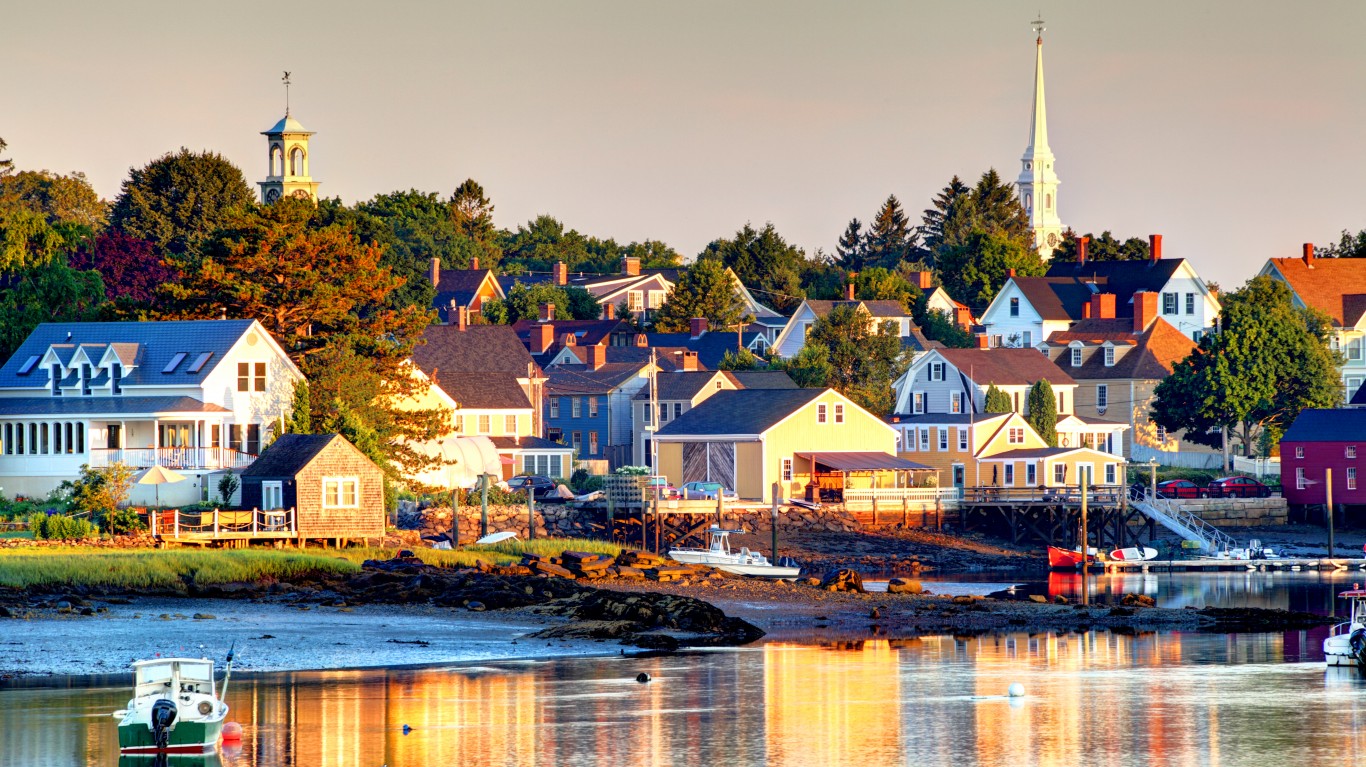
12. New Hampshire
> 1-year change in population: 0.8%
> Population estimate (July 1, 2020) 1,377,848
> Population estimate (July 1, 2021) 1,388,992
> Avg. new COVID cases, past 7 days 1,673.71

11. North Carolina
> 1-year change in population: 0.9%
> Population estimate (July 1, 2020) 10,457,177
> Population estimate (July 1, 2021) 10,551,162
> Avg. new COVID cases, past 7 days 18,802.86
[in-text-ad]
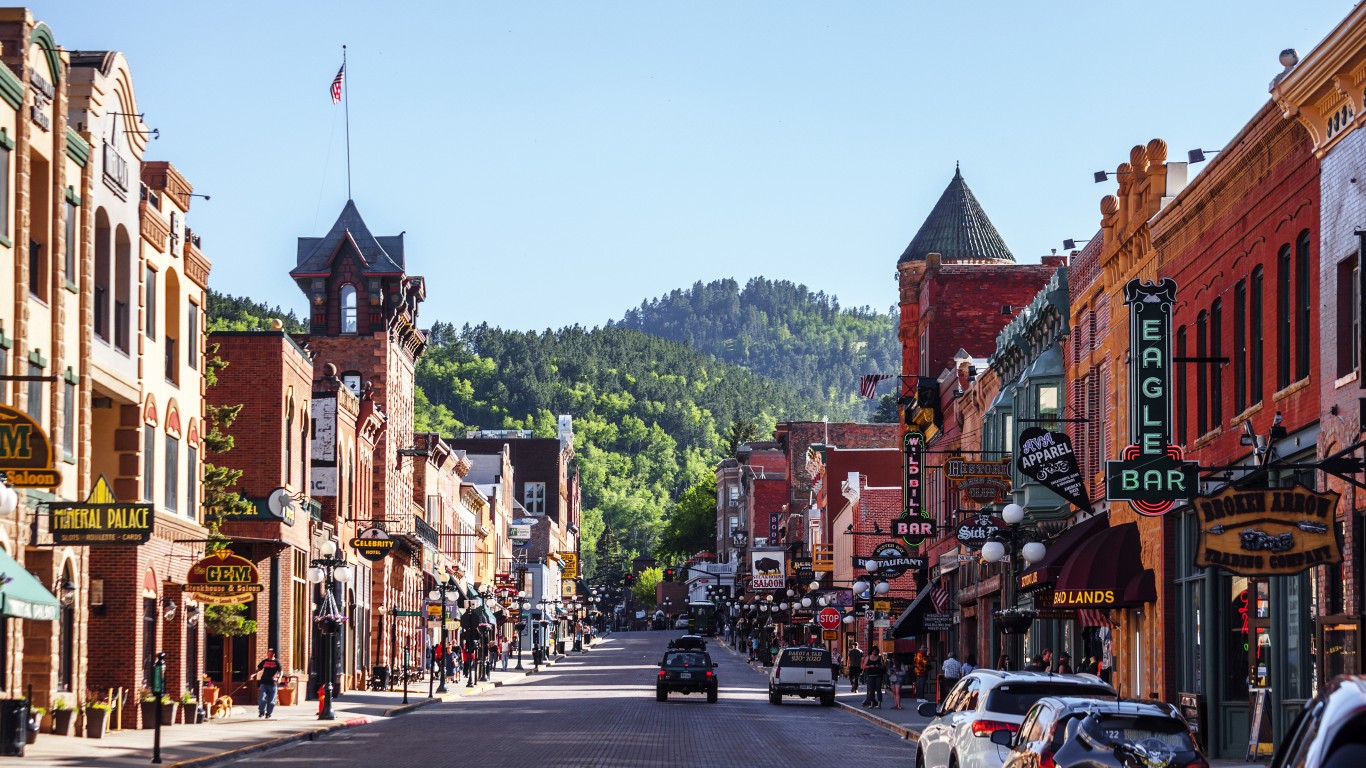
10. South Dakota
> 1-year change in population: 0.9%
> Population estimate (July 1, 2020) 887,099
> Population estimate (July 1, 2021) 895,376
> Avg. new COVID cases, past 7 days 1,124.29
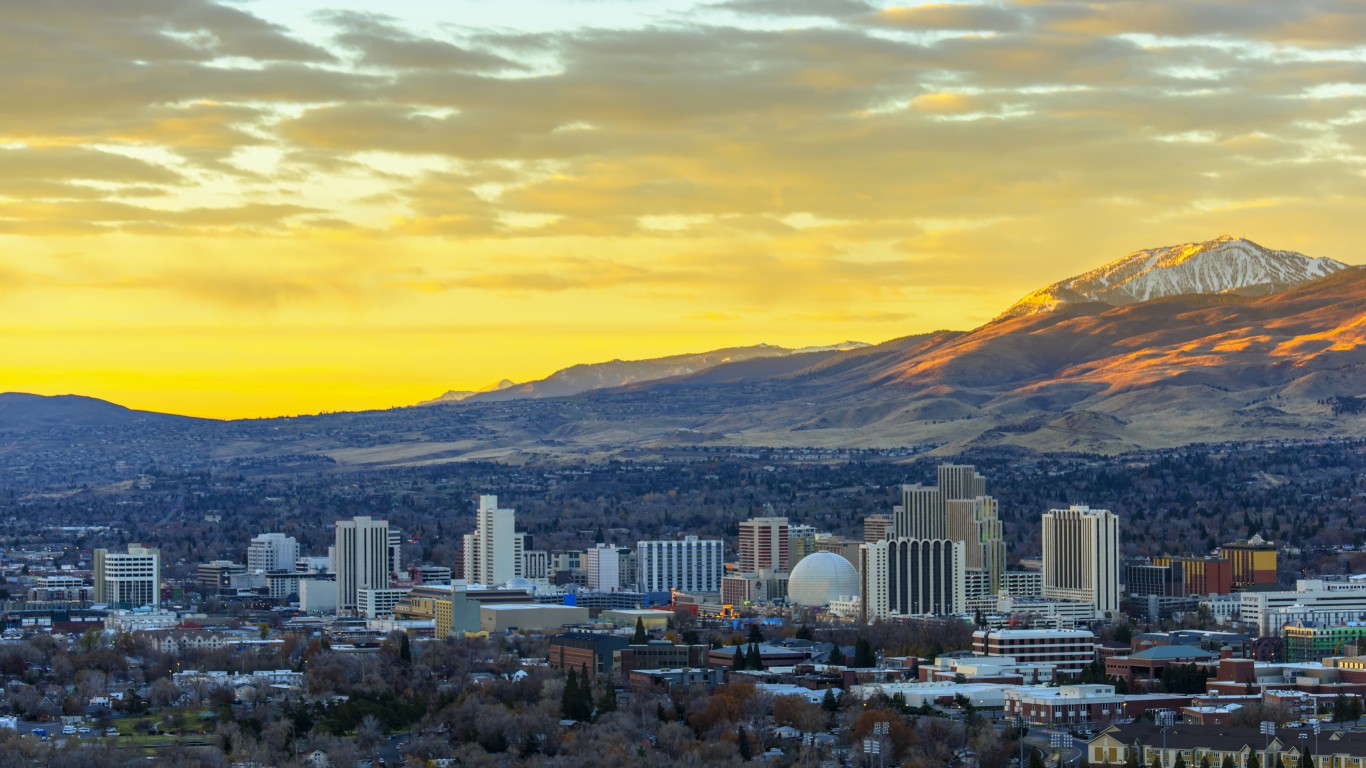
9. Nevada
> 1-year change in population: 1.0%
> Population estimate (July 1, 2020) 3,114,071
> Population estimate (July 1, 2021) 3,143,991
> Avg. new COVID cases, past 7 days 3,793.57
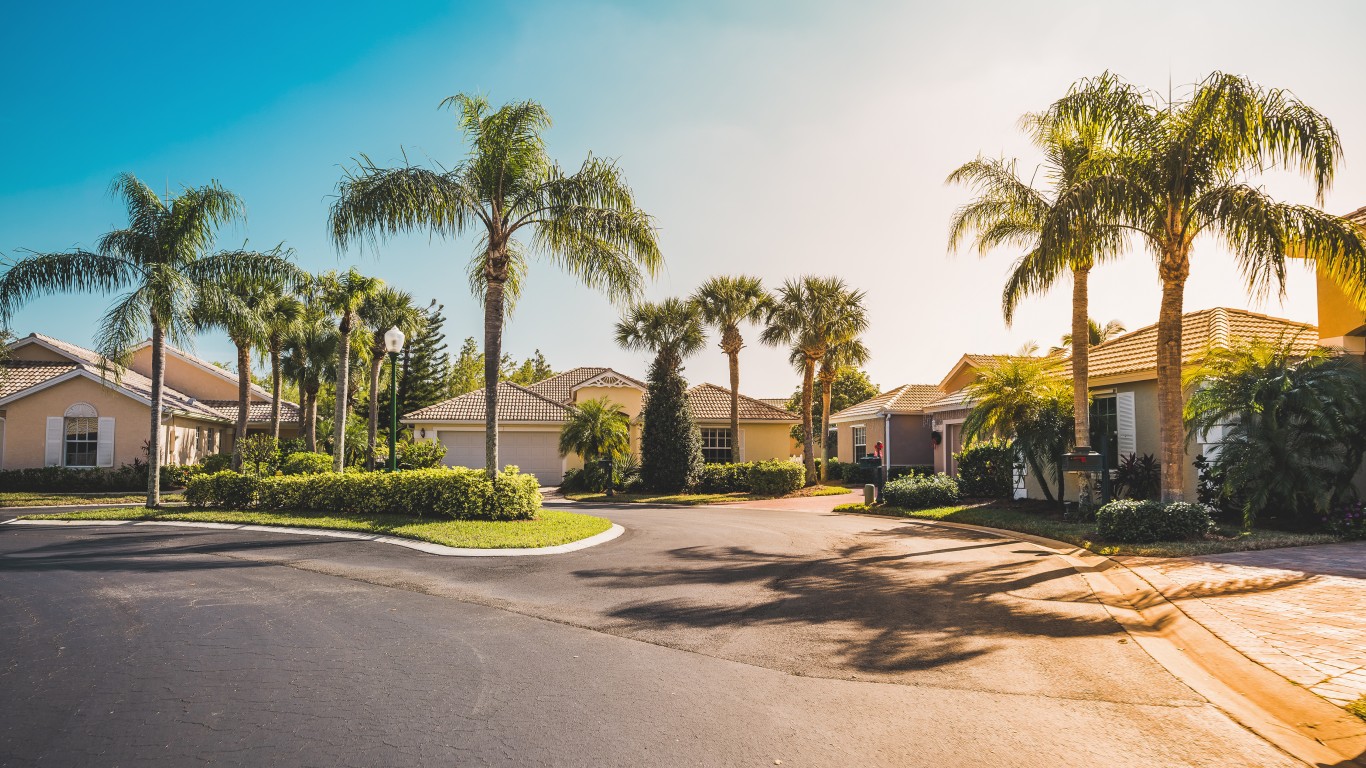
8. Florida
> 1-year change in population: 1.0%
> Population estimate (July 1, 2020) 21,569,932
> Population estimate (July 1, 2021) 21,781,128
> Avg. new COVID cases, past 7 days 24,682.86
[in-text-ad-2]
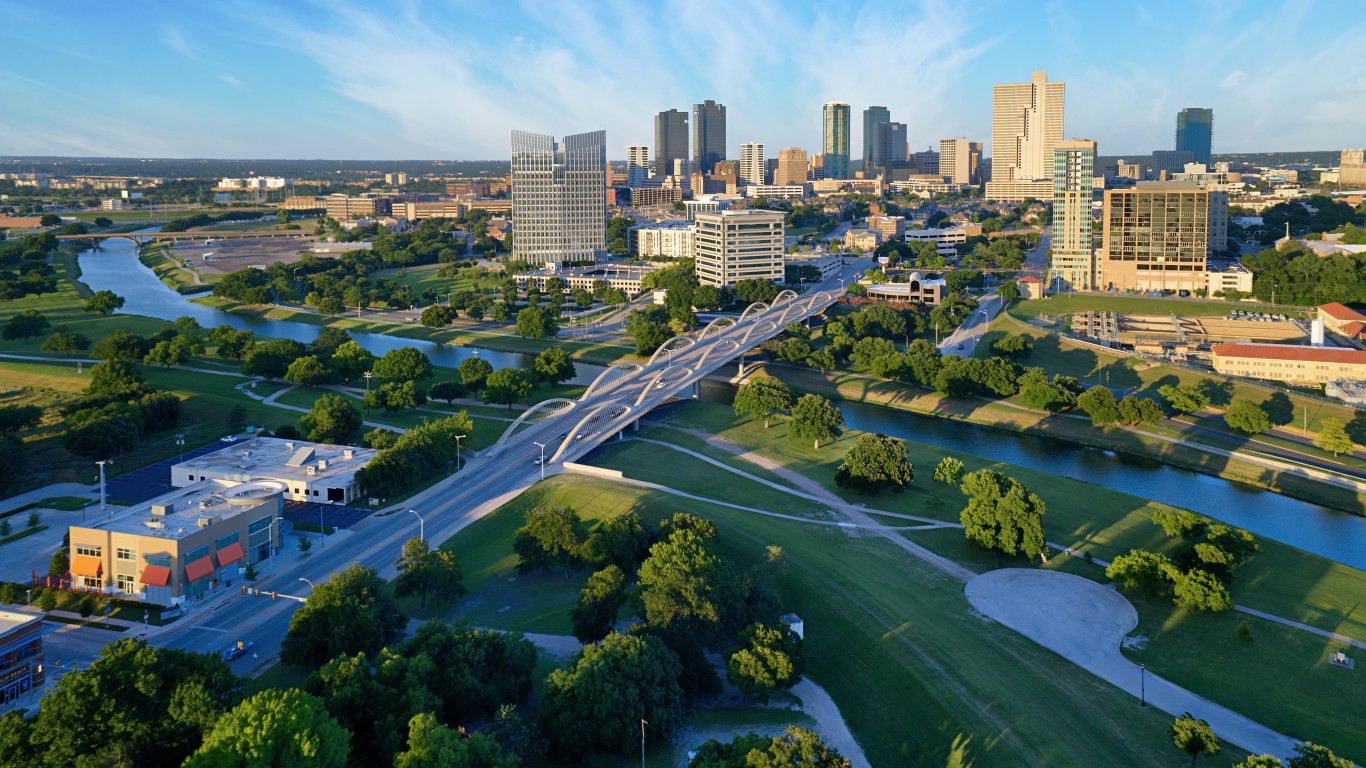
7. Texas
> 1-year change in population: 1.1%
> Population estimate (July 1, 2020) 29,217,653
> Population estimate (July 1, 2021) 29,527,941
> Avg. new COVID cases, past 7 days 35,168.86
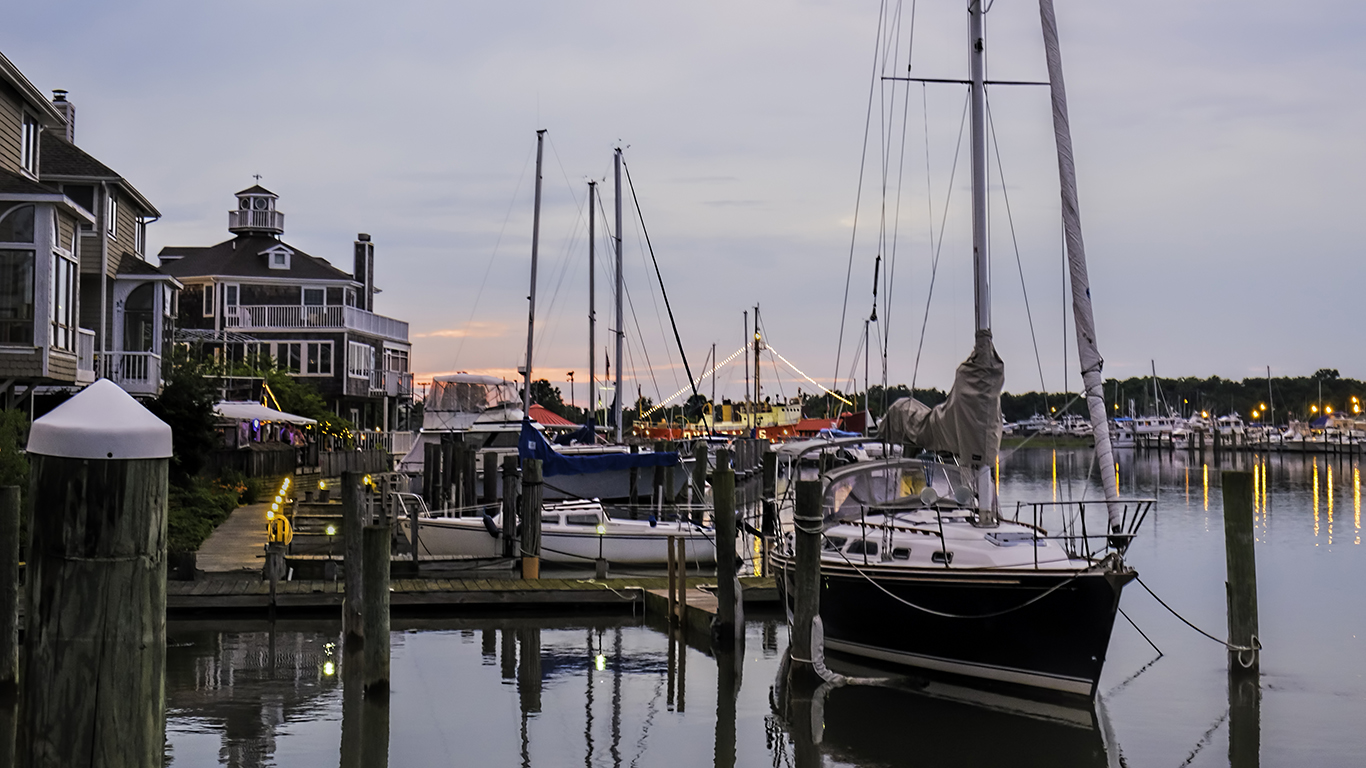
6. Delaware
> 1-year change in population: 1.2%
> Population estimate (July 1, 2020) 991,886
> Population estimate (July 1, 2021) 1,003,384
> Avg. new COVID cases, past 7 days 963.43
[in-text-ad]
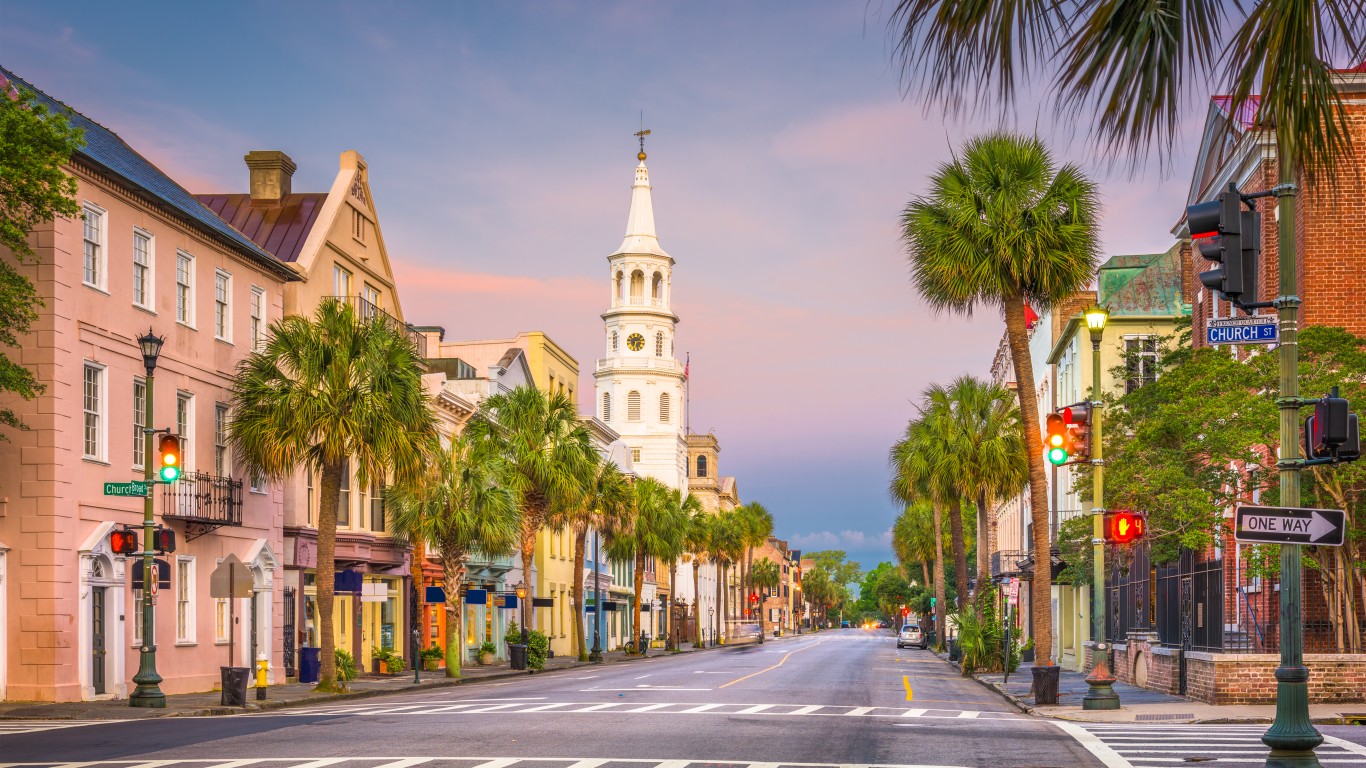
5. South Carolina
> 1-year change in population: 1.2%
> Population estimate (July 1, 2020) 5,130,729
> Population estimate (July 1, 2021) 5,190,705
> Avg. new COVID cases, past 7 days 17,455.71

4. Arizona
> 1-year change in population: 1.4%
> Population estimate (July 1, 2020) 7,177,986
> Population estimate (July 1, 2021) 7,276,316
> Avg. new COVID cases, past 7 days 14,763.14
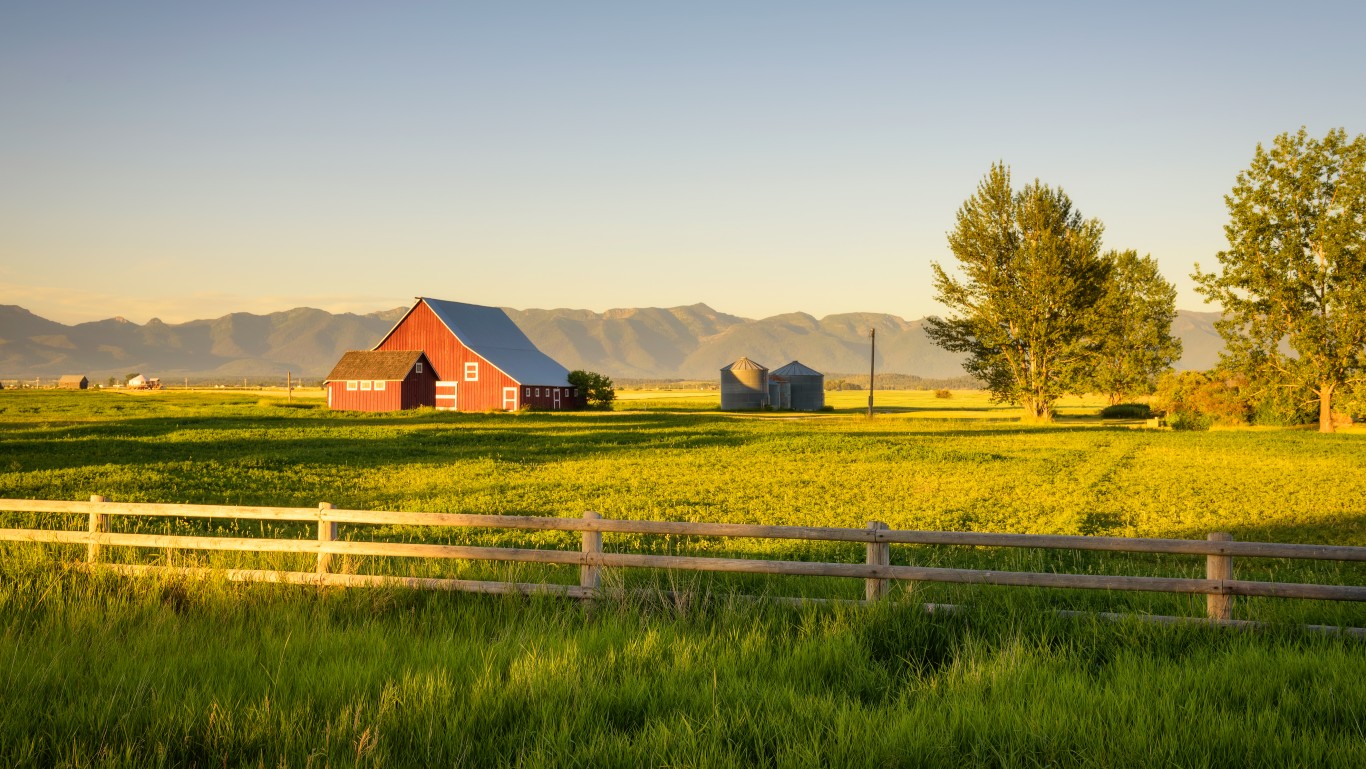
3. Montana
> 1-year change in population: 1.7%
> Population estimate (July 1, 2020) 1,086,193
> Population estimate (July 1, 2021) 1,104,271
> Avg. new COVID cases, past 7 days 2,155.14
[in-text-ad-2]
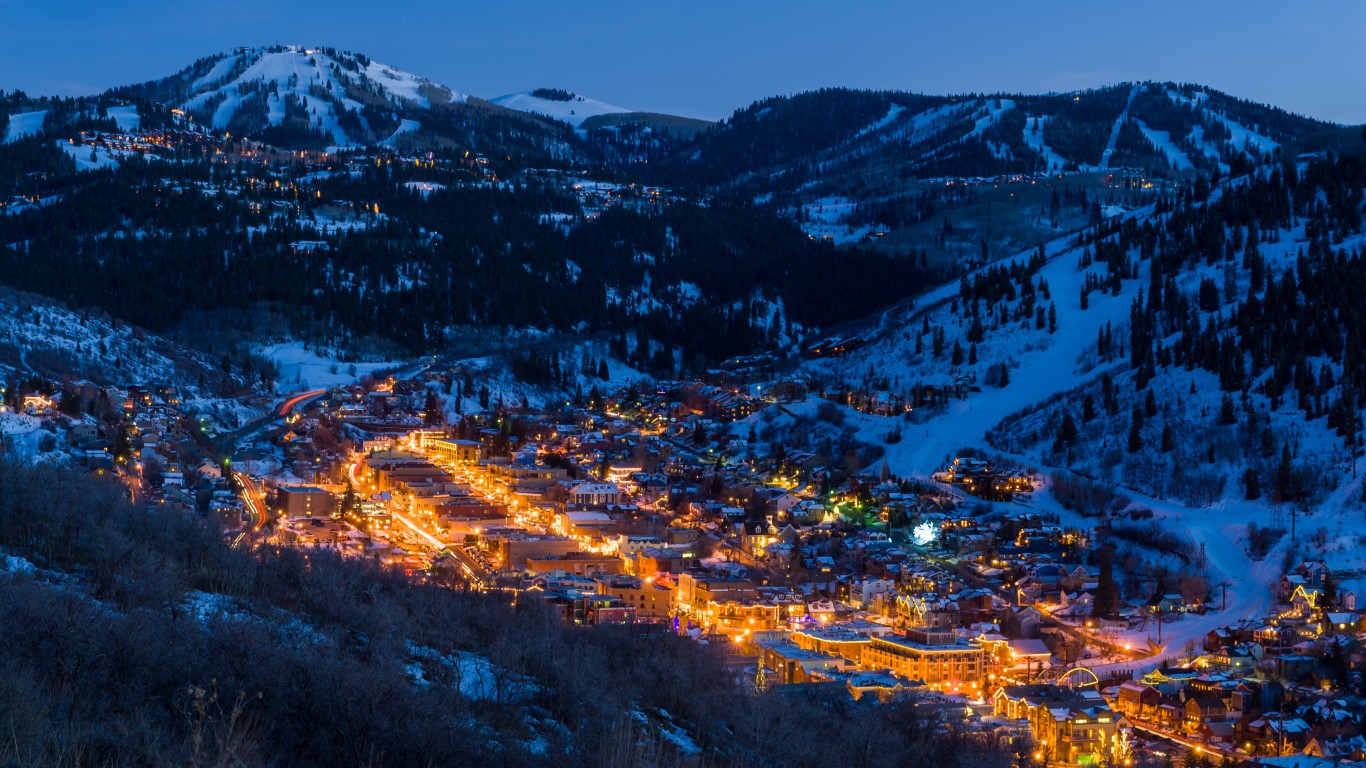
2. Utah
> 1-year change in population: 1.7%
> Population estimate (July 1, 2020) 3,281,684
> Population estimate (July 1, 2021) 3,337,975
> Avg. new COVID cases, past 7 days 5,366.29
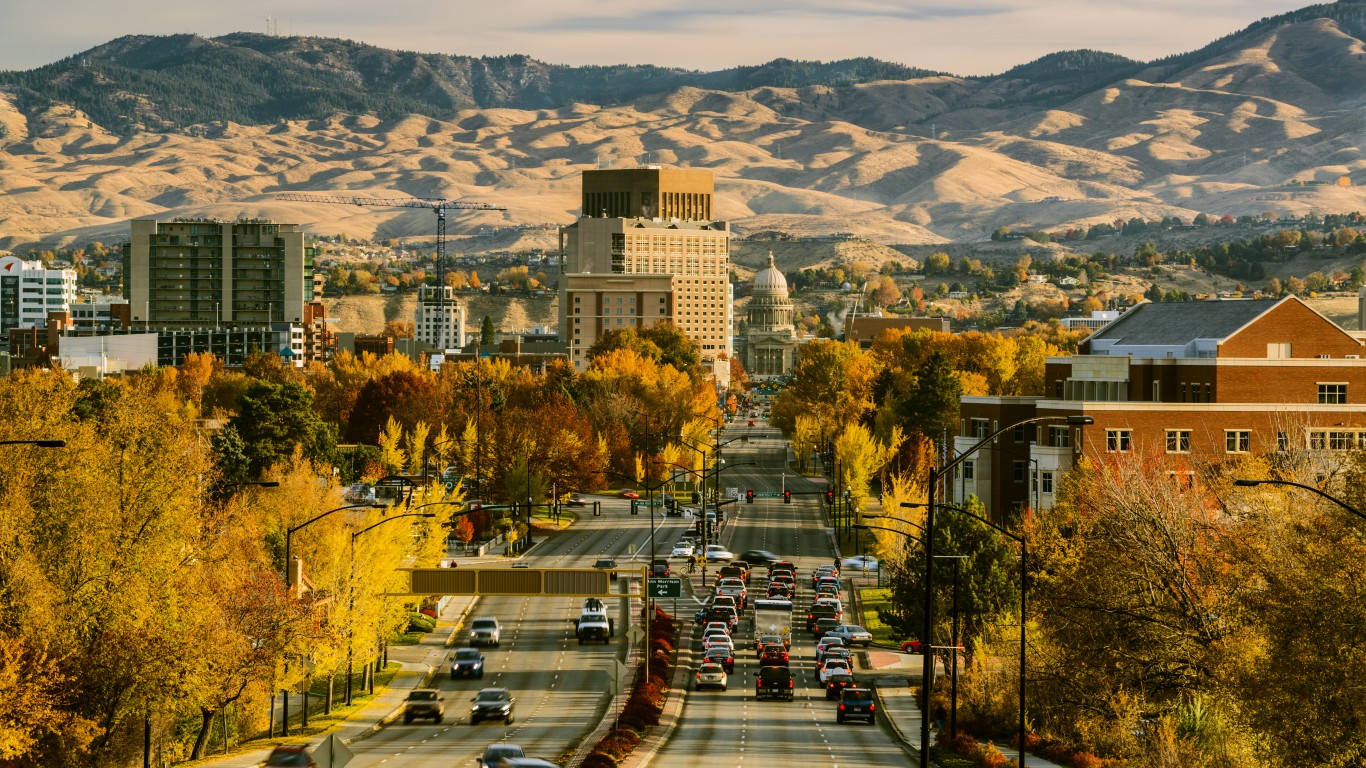
1. Idaho
> 1-year change in population: 2.9%
> Population estimate (July 1, 2020) 1,847,772
> Population estimate (July 1, 2021) 1,900,923
> Avg. new COVID cases, past 7 days 2,749.00
Travel Cards Are Getting Too Good To Ignore (sponsored)
Credit card companies are pulling out all the stops, with the issuers are offering insane travel rewards and perks.
We’re talking huge sign-up bonuses, points on every purchase, and benefits like lounge access, travel credits, and free hotel nights. For travelers, these rewards can add up to thousands of dollars in flights, upgrades, and luxury experiences every year.
It’s like getting paid to travel — and it’s available to qualified borrowers who know where to look.
We’ve rounded up some of the best travel credit cards on the market. Click here to see the list. Don’t miss these offers — they won’t be this good forever.
Thank you for reading! Have some feedback for us?
Contact the 24/7 Wall St. editorial team.
 24/7 Wall St.
24/7 Wall St.